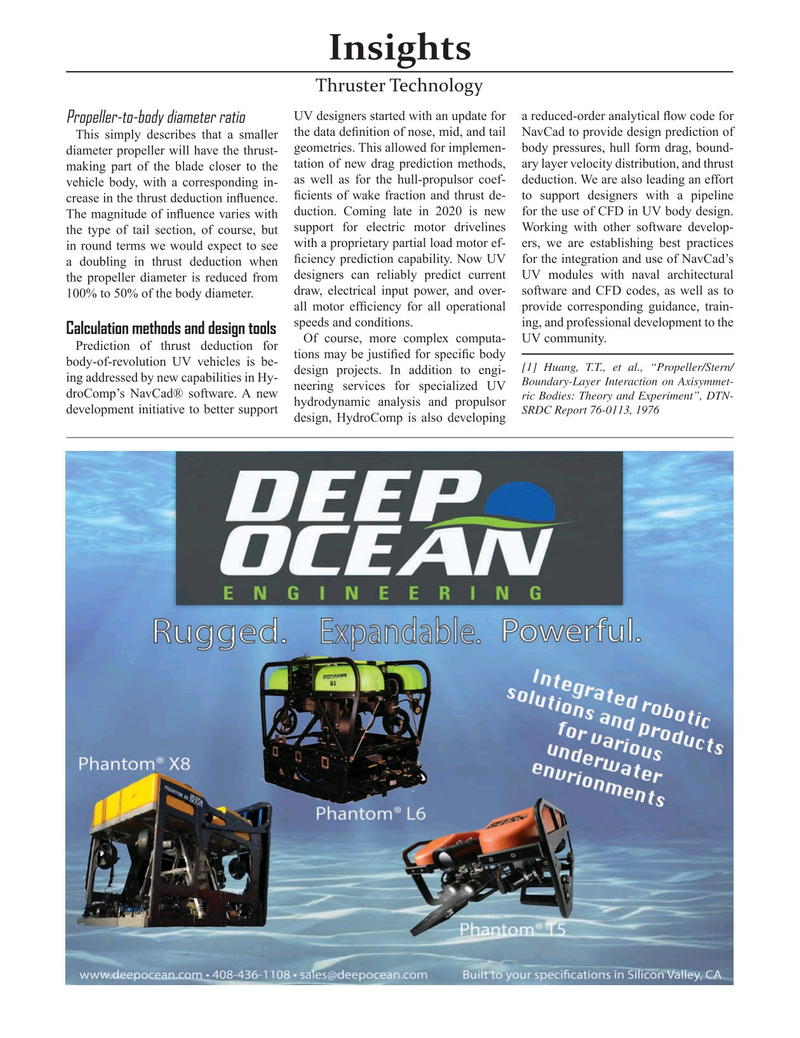
Page 19: of Marine Technology Magazine (September 2020)
Read this page in Pdf, Flash or Html5 edition of September 2020 Marine Technology Magazine
Insights
Thruster Technology
UV designers started with an update for a reduced-order analytical ? ow code for
Propeller-to-body diameter ratio
This simply describes that a smaller the data de? nition of nose, mid, and tail NavCad to provide design prediction of geometries. This allowed for implemen- body pressures, hull form drag, bound- diameter propeller will have the thrust- making part of the blade closer to the tation of new drag prediction methods, ary layer velocity distribution, and thrust as well as for the hull-propulsor coef- deduction. We are also leading an effort vehicle body, with a corresponding in- crease in the thrust deduction in? uence. ? cients of wake fraction and thrust de- to support designers with a pipeline
The magnitude of in? uence varies with duction. Coming late in 2020 is new for the use of CFD in UV body design. the type of tail section, of course, but support for electric motor drivelines Working with other software develop- in round terms we would expect to see with a proprietary partial load motor ef- ers, we are establishing best practices a doubling in thrust deduction when ? ciency prediction capability. Now UV for the integration and use of NavCad’s the propeller diameter is reduced from designers can reliably predict current UV modules with naval architectural draw, electrical input power, and over- software and CFD codes, as well as to 100% to 50% of the body diameter.
all motor ef? ciency for all operational provide corresponding guidance, train- speeds and conditions. ing, and professional development to the
Calculation methods and design tools
Of course, more complex computa- UV community.
Prediction of thrust deduction for tions may be justi? ed for speci? c body body-of-revolution UV vehicles is be- [1] Huang, T.T., et al., “Propeller/Stern/ design projects. In addition to engi- ing addressed by new capabilities in Hy-
Boundary-Layer Interaction on Axisymmet- droComp’s NavCad® software. A new neering services for specialized UV ric Bodies: Theory and Experiment”, DTN- hydrodynamic analysis and propulsor development initiative to better support
SRDC Report 76-0113, 1976 design, HydroComp is also developing
MTR #7 (18-33).indd 19 9/11/2020 8:33:25 AM

 18
18

 20
20
